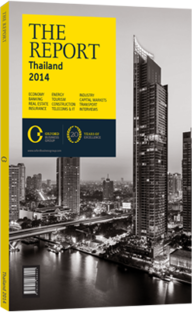OBG talks to Chadchart Sittipunt, Minister of Transport

Interview: Chadchart Sittipunt
What role can the transport infrastructure plan play in Thailand’s sustained economic development?
CHADCHART SITTIPUNT: If you consider the long-term growth drivers for Thailand, including urbanisation, automotive manufacturing, tourism, domestic consumption and the prospect of ASEAN Economic Community (AEC) integration, they all require good infrastructure. Without proper investment for this, the nation is likely to experience significant reductions in foreign direct investment over the coming years. We have neglected needed investments for so long that the country is now ranked 61st globally in terms of infrastructure competitiveness. In this sense, the formation of the AEC presents opportunities, although it also poses a threat since investors can shift their operations so easily in today’s globalised environment.
This is why the government’s BT2trn ($65.4bn) transport infrastructure plan will help to position Thailand as the transport and logistics hub of the region, by connecting the 600m people in ASEAN as well as the Chinese to the north. As a result, we expect to see a 1% annual increase to GDP, coupled with the creation of 500,000 jobs, as the project progresses over the next seven years. As this infrastructure is developed and stimulates greater economic activity, we anticipate a huge multiplier effect on the economy.
To what extent will the finished infrastructure investment plan reduce transportation and logistics costs for businesses operating in Thailand?
CHADCHART: Logistics costs account for approximately 15% of GDP. This figure comprises three key components: transportation, management and inventory. For the ministry’s part, we are responsible for transportation, which is about 7% of the total figure. The finished transport infrastructure plan will enable us to cut this by two percentage points through reduced transportation times and increased logistical efficiencies, which will be highly beneficial for the business community here, while improving the country’s competitiveness vis-à- vis the ASEAN region. However, it is not fair to compare us to some regional competitors, like Malaysia, where logistics costs account for close to 8% of GDP, as Thailand has many heavy commodities, including rice and sugar, which increase our overall logistics costs.
What impact will the introduction of double-track railway and high-speed rail options have on internal and regional trade?
CHADCHART: It is important to emphasise that these two projects serve different purposes. Some people have argued that we should just invest in the development of double-track capacity and not the high-speed trains.
Yet both of these projects will be vital in promoting regional connectivity. Our neighbours in Vietnam, Myanmar, Laos and Cambodia all use metre gauge tracks, whereas the high-speed trains employ standard gauge tracks. The double-track plan includes the upgrade of 2800 km of rail tracks all over the country to fit these metre gauge requirements and enhance connectivity.
At present, Thailand’s double-track system is roughly 300 km. This is why the average freight train can only travel at 39 km per hour because the single-track system gives priority to the passenger trains. Upgrading to double-track will enable us to move more cargo at faster rates in-country and to our neighbours, and the high-speed trains encourage greater urbanisation and intra-state mobility, while also promoting passenger access to our neighbours in ASEAN.
How will the government’s approach to phased borrowing for infrastructure development assist with the repayment costs?
CHADCHART: The transport infrastructure scheme will be funded domestically through a phased approach that will keep public debt at 50% of GDP – well within a reasonable parameter. Because it is not always feasible to complete these types of projects through the annual budget, we will separate the transport infrastructure plan into a bill to better account for repayments.
You have reached the limit of premium articles you can view for free.
Choose from the options below to purchase print or digital editions of our Reports. You can also purchase a website subscription giving you unlimited access to all of our Reports online for 12 months.
If you have already purchased this Report or have a website subscription, please login to continue.

